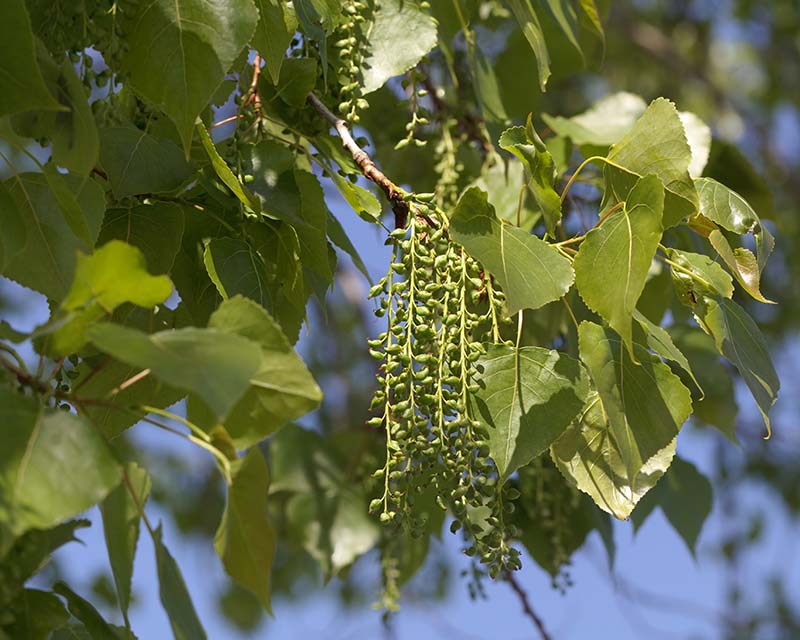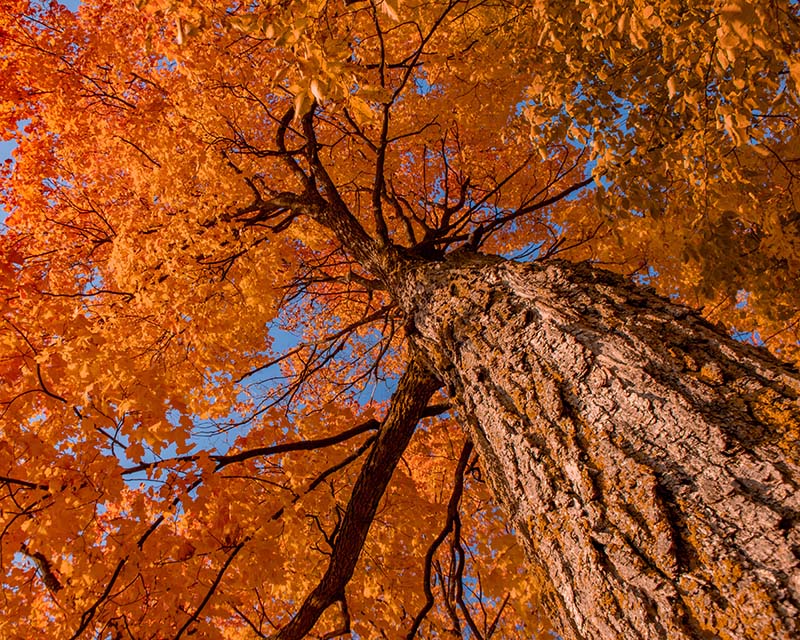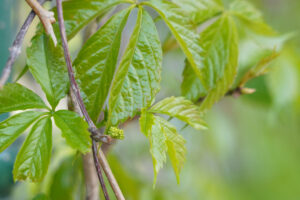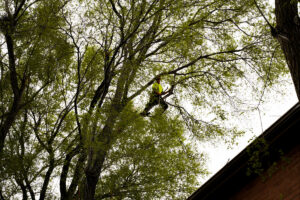There is an incredible amount of tree species in the entire world, with a recent study estimating over 73,000. The world’s a big place and most species occur in more temperate regions like the tropics. Here in Ontario, the major native tree species number around 85. That’s still plenty to differentiate, and some non-native species are regularly brought in for decorative reasons. While it’s impractical to provide a complete and detailed list within this article, we’ll guide you through identifying some of the most common trees in Ontario and address a key consideration for the care of each species.
The Black Spruce
The Black Spruce is the most common tree in the province and can be found throughout most of Canada, although you won’t see many around Toronto and Southern Ontario. This slow-growing evergreen primarily occurs throughout the north in the Boreal Forest. The tree is easily identified by a few factors. It is relatively small. Most trees have a trunk no more than 50cm in diameter and 5-15m high, although some grow twice that. Black spruce bark is thin and scaly with a grey tint. Its branches grow short needles (0.6-1.5cm) that are blueish green on the top of the branch and whitish green on the bottom. The tree is best recognized for its purple and dark red cones that grow in clusters. They are round and the smallest cones of any spruce, growing no bigger than 4cm. Like many trees, it especially benefits from pruning in the early spring.

Poplar or Trembling Aspen
The poplar or trembling aspen is the second most common tree in Ontario and the most widely distributed tree in North America. It regularly shares territory with the Black Spruce, but also reaches into the GTA and Southern Ontario to cross the border. Most grow to 18m, but the record is 36.5m. The trunks are usually thinner at a diameter of 25cm, but the record is a hefty 1.37m. The bark is smooth and whitish with horizontal scars and black knots all over. Vertical scars on the lower half are also common since elk and deer strip off the tree’s bark. On young trees, the green and grey leaves are large and triangular, which round out with small teeth on the edge as the tree ages.

Lastly, the tree grows flowery cones called catkins that grow in the early Spring and turn into cottony seeds. You may also see patches of white satin in the branches of one of your poplar trees. These are made by the larvae of satin moths, a popular pest for the poplar. Be sure to have these pests controlled, or they can harm the tree.
Sugar Maple
The sugar maple is the arboreal emblem of Canada and the source of our nation’s definitive export: maple syrup. The sugar maple grows throughout eastern Canada as well as in the bordering states of the US. Despite only being in southern Ontario, it is the fifth most common tree in the province. Most Canadians should be able to recognize the maple’s five-lobed leaves with 11 points. They remain green until the fall when they turn into their famous yellows, oranges, and reds. The tree usually grows to 25-35m tall with a greyish brown, vertically grooved trunk. Some maples look similar, but the potentially shaggy bark and clear sap of the sugar maple are distinctive hallmarks. Of course, if the tree has a tap and bucket, it’s a sugar maple. If looking to grow your own sugar maples, be sure they are receiving the proper soil nutrients.

Toronto’s Red Oak
Numerous oak species grow throughout Southern Ontario, including the red, white, and black varieties. The red is the most common and is also the emblem of Toronto. It grows throughout the city as well as Mississauga, Scarborough, and beyond the GTA. It grows up to 28m tall with a narrow, rounded canopy. The oak’s leaf is dark green with 7 to 9 pointed lobes. The red oak also produces distinctive acorns. However, it is most easily recognized by its bark, which features vertical ridges with shiny stripes down the center along the trunk’s entire height. The tree is vulnerable to oak wilt, a specific fungus found in Southern Ontario. Be sure to have the tree inspected, if you notice its leaves wilting and turning brown.

Just a Few Trees in the Provincial Forest
You should now be able to identify at least a few of the many different trees in our Ontario forests and backyards. There’s still plenty more to learn. If you need help identifying a tree, contact our certified expert arborists at Advanced Tree Care. If you want advice on how to care for your various trees, our consulting services help homeowners and developers maintain beautiful, healthy trees no matter the species.
Suggested Reading:
A Field Guide to Trees of Ontario by James E. Eckenwalder, Deborah A. Metsger, Timothy A. Dickinson, and Sarah H. Hodges






